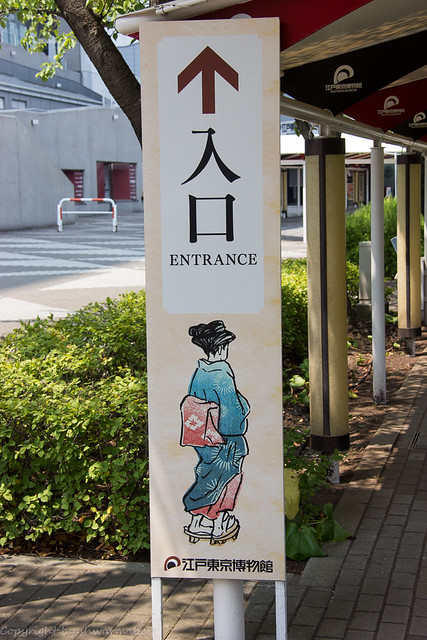
The weather is not very cooperating, it is 100 degrees (38 Celsius) on this August day. To escape the heat we make our way to Edo-Tokyo Museum.
This museum as it's name suggests showcases the history of Edo/Tokyo from Tokugawa's rise (1600) until today. The museum looks like a not-too-attractive spaceship from the outside. However, it compensates for its unsightliness on the inside. Several life-size models of buildings, houses, Japanese homes from hundreds of years ago, figurines and maquettes make the exhibitions exiting, somewhat Disney like, that even children can enjoy.
The life-size replica of the wooden Nihonbashi bridge is a good start for our museum walk.
Nihonbashi means the bridge (
bashi) of Japan (
Nihon) in Japanese. This was the last stop of the samurai on their yearly pilgrimage on the Tokaido highway that connected the capital of the emperor, Kyoto, to the shogun's capital, Edo. This is sort of our first stop on our way to the imperial Kyoto.
William Adams, the English samurai, traveled this road in 1613 and observed the orderliness of Japanese society that made getting around a pleasure even back in those days: “Saris was astonished when he saw the quality of the road. Its sand and gravel surface was "
wonderfull even" and "
where it meeteth with mountains, passage is cut through." The road was divided into leagues, and at the end of each league was a marker in the form of a "
faire pine tree trimmed round in the fashion of an arbour"… There were few dangers on the road… Adams explained to Saris that Japan had a tightly regulated system of local government, which imposed a rigorous discipline on the population: "
[There is] not a lande better governed in the worlde by civil pollecy." Each town had a governor, and every street was gated. Houses were divided into clusters - with a headman charged with maintaining order - and everyone kept a close eye on the doings of their neighbours, especially after dark when a curfew was imposed.”
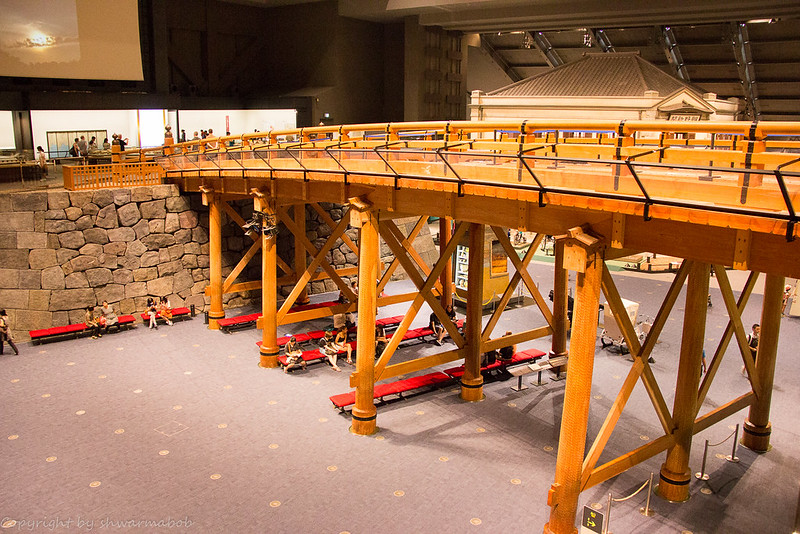
As we wonder about the museum, we marvel at the details of the models of cities and castles, sit in ancient carriages and bicycles, observe a tea ceremony. We spend a couple of hours here and are having a great time, that is except one of us who is not a museum fan and “cannot take it any longer”. This person shall remain unidentified. Nevertheless, we have to leave out of consideration for this mysterious individual.
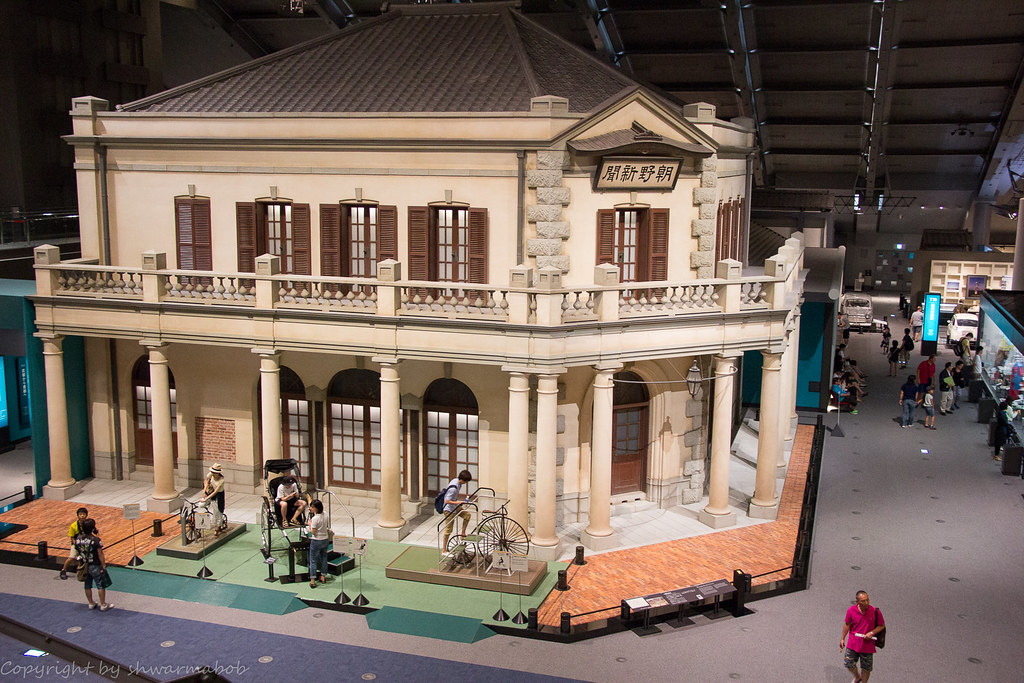
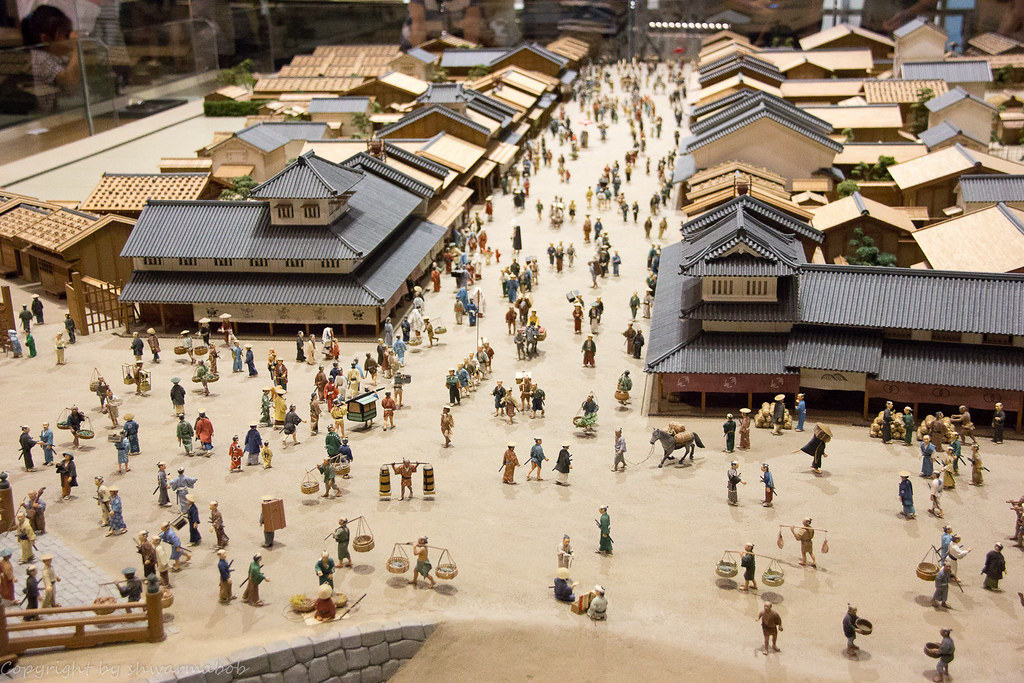
Tati at work
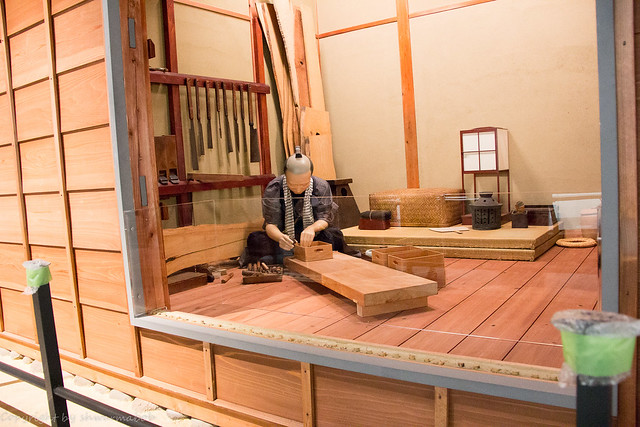
Mommy at work and young Yamato observing
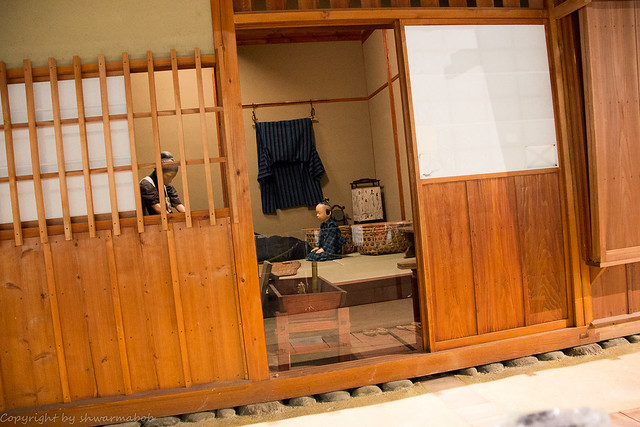
bookshop in 1797 on the Tokai highway

Storefront during WWII
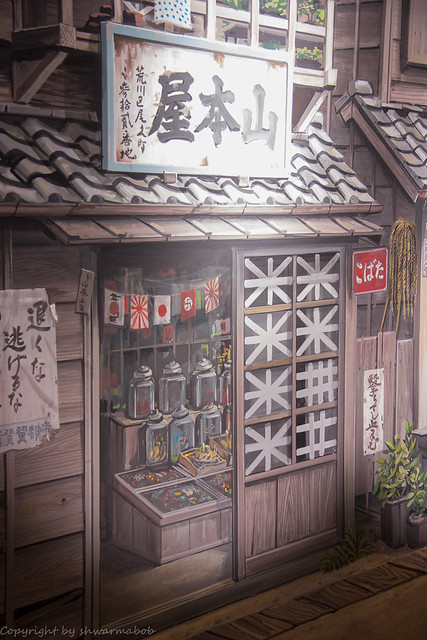
Some sort of AZ festival
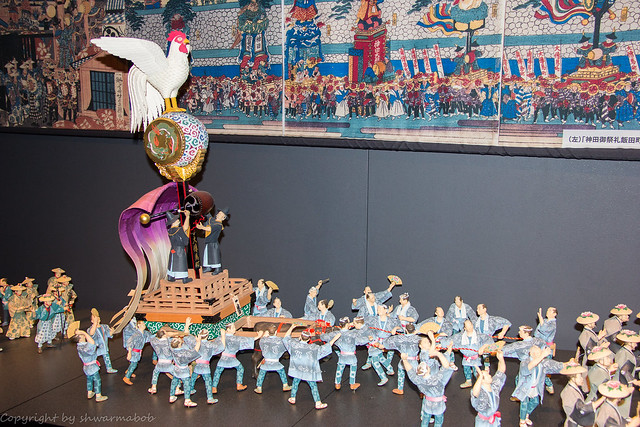
If you have time or the the weather is bad I highly recommend visiting the Edo Museum.